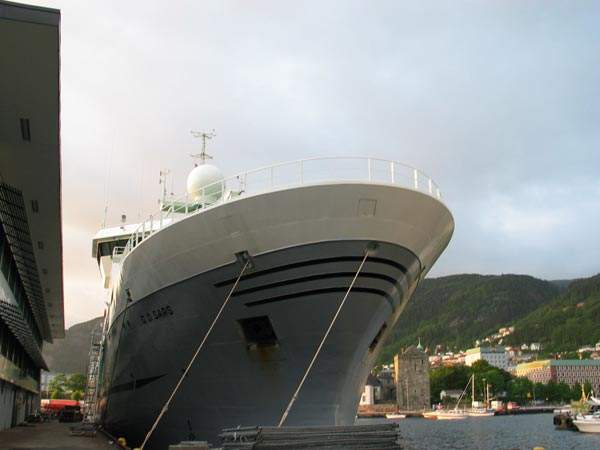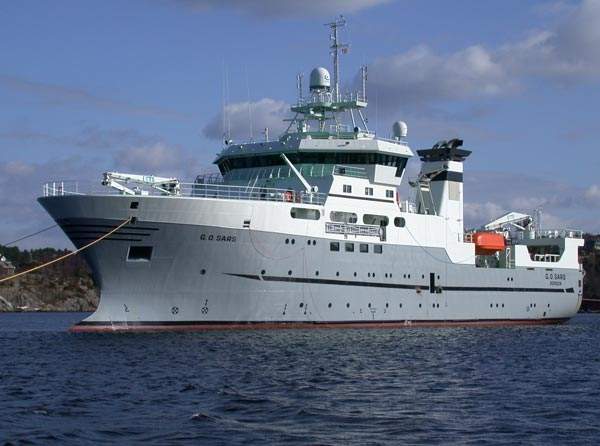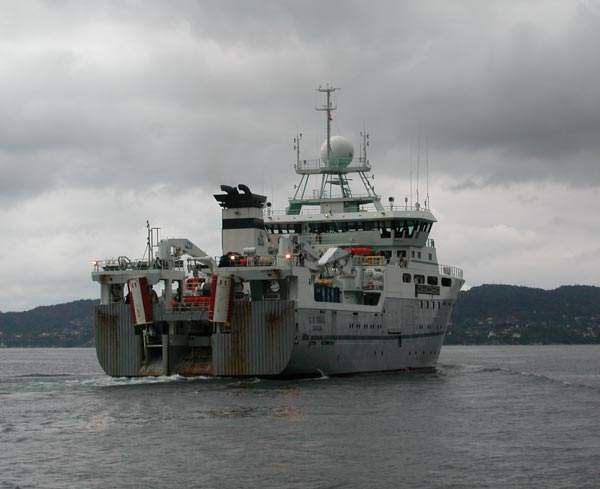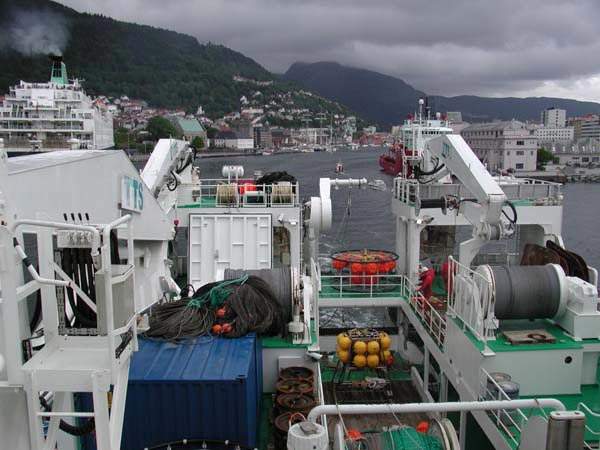G.O. Sars is a Norwegian marine research vessel which is jointly owned and operated by the Institute of Marine Research (IMR) and the University of Bergen (UIB). She is possibly the world’s most advanced research vessel of her kind. She is armed with state-of-the-art technologies to help carry out various kinds of marine research work.
The research vessel was handed over to her owner in May 2003. She is named after Georg Ossian Sars, a Norwegian marine life scientist, and was constructed to replace another research vessel with the same name (now known as RV Sarsen), built in 1970.
G.O. Sars is outfitted and prepared for worldwide operations. In summer 2004, the vessel participated in the Norwegian-led MAR-ECO Expedition to explore life in the Mid-Atlantic Ridge.
In the summer of 2009, the vessel undertook a major expedition to find and study ecosystems of the northern Arctic Circle.
Features of the technologically advanced research vessel G.O. Sars
Norwegian ship designer Skipsteknisk was given the responsibility of developing the projection and design of the vessel in 1999. IMR and Skipsteknisk worked together on the specifications and drawings of the vessel.
G.O. Sars is a super silent vessel and is built according to ICES Cooperative Research Report no. 209, on the underwater noise of research vessels. The vessel’s noise and vibration-damped diesel generators produce 99% less underwater noise compared to conventional marine research vessels.
One of the most advanced features of the vessel is the hull and drop keel-mounted transducers. This feature increases the accuracy of data collection even in poor weather conditions, such as high winds and storms.
The 77.50m long vessel has a moulded breadth of 16.40m. Length between perpendiculars is 68.40m. Depth to main deck is 6.20m, while depth to second deck is 9.10m. Design load line is 6.20m.
Deadweight of the vessel at 6.20m draught is 1,308t. Gross tonnage and net tonnage are 4,067t and 1,220t respectively.
Construction of the Norwegian IMR’s state-of-the-art marine research vessel
The Norwegian ship builder Flekkefjord Slipp & Maskinfabrikk (FSM) was contracted in December 2000 for the construction of the G.O. Sars. Building of the sections commenced at the Crist Yard in Poland in 2001. FSM-owned Kvina Yard in Norway built the sections of the hull above the trawler deck.
The Polish sections and the Norwegian sections were put together at Kvina, and the complete hull was ready for launching in August 2002. Final outfitting of the vessel was completed at Flekkefjord, Norway.
Instruments and technology onboard the UIB and IMR-operated ship
The new generation marine research vessel is prepared and fabricated for seismic research and sea floor explorations besides fishery and environmental studies.
Towards the centre of the ship are two sheltered hangars for environmental research operations. In addition, there are nearly 15 specialised laboratories.
The vessel is set up with separate winch systems for both open sea trawling and bottom trawling. The hull and the drop kill are mounted with a number of hydro-acoustic sensors.
These include multibeam echo sounders for deep sea mapping, EM 102 multibeam sonar for measurement of volume and density of fish schools and a TOPAS PS 018 parametric sub-bottom profiler, to obtain a clear picture of what lies below the seabed. There is also an acoustic Doppler current profiler to produce a record of water current velocities at varied depths.
Deck equipment on Norway’s marine research vessel G.O. Sars
G.O. Sars is equipped with electric AC driven fishing winches. There is an anchor / mooring winch, double sweep-line winches and two single sweep-line winches. Other fishing winches include two pelagic trawl winches and two demersal trawl winches. There is also a capstan which is capable of lifting 5.5t.
Scientific winches include one Mocness winch, two CTD winches, a multipurpose sounder winch, a hydrographic / plankton winch, a deep tow winch and a multinet / Mocness winch.
Cranes and handling equipment includes two hangar cranes and three elbow derrick cranes. There is also a Z-frame and a CDT davit.
Propulsion and power of the super silent vessel built by FSM
G.O. Sars is outfitted with a diesel electric propulsion plant. The main propulsion system comprises two Teco Westinghouse DC motors, each producing 300kW at 170rpm, along with one Wärtsilä propeller (five-bladed, fixed pitch). The propulsion system allows the vessel to cruise at a maximum speed of 17.5kt.
The power generation plant consists of three Wärtsilä 6 L32 diesel generator sets, each rated at 2,700kW. These generators are connected to three Siemens alternators rated at 3,250kVA.
For smooth manoeuvring, the vessel is equipped with a retractable azimuth thruster of 900kW and a tunnel thruster of 600kW. Both the thrusters are placed fore. An additional tunnel thruster of 450kW is placed astern. All three thrusters are of Brunvoll make.







